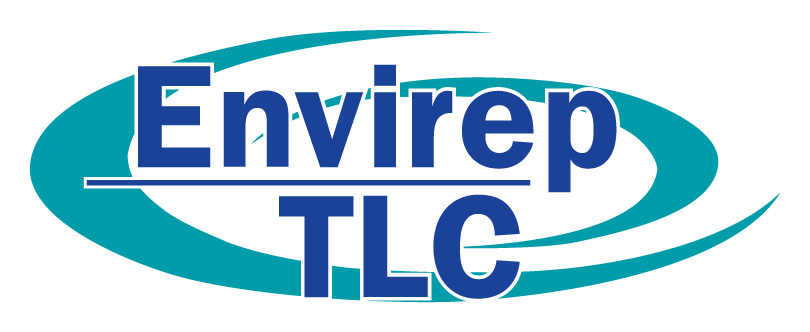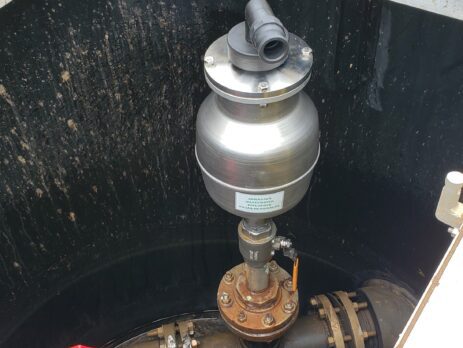H-Tec Air Release Valves: Optimize Your Force Main

The Importance of Air Release Valves in Force Mains
Air Release Valves are essential in pressurized pipelines such as sewage force mains. They play a vital role in maintaining system efficiency by automatically removing trapped air. The amount of air entrained in wastewater systems is far greater than drinking water transmission networks. If air valves are not present on the pipes, the trapped air can significantly increase the energy needed for pumping. In addition, one of the gases present in the “air”, Hydrogen Sulfide, is highly corrosive. It can attack and weaken pipes if it’s not properly vented out to the atmosphere.
How Does Air Enter a Force Main?
- Initial Filling: Air is trapped during the pipeline’s initial filling. Most is evacuated during startup, but some air pockets remain in the force main.
- Dissolved Air: Liquids such as water can contain trapped or dissolved air depending on the temperature and pressure. During fluid flow, this air can separate from the liquid and accumulate at high points in the system. Additionally, in sewage pipelines, chemical reactions can produce hydrogen sulfide and other corrosive gases that become trapped in the force main.
- Leaks: Air can also enter the pipeline through pumps, pipe joints, valves, etc. Leaks or faulty seals in these components can lead to air infiltrating the piping system.

What Problems are Caused by Air in a Force Main?
- Reduced Flow Rates: Air pockets impede water flow, making it harder for water to move through the pipe.
- Higher Power Costs: Air in pipelines can reduce the efficiency of the pumping system. The air trapped at the high points of the system blocks flow, increasing the pressure head and the energy required for pumping.
- Pump Issues: Increased discharge pressure due to air pockets forces pumps to work longer and harder, potentially leading to cavitation and premature failure. The increased discharge pressure caused by the air can also cause noisy pump operation.
- Water Hammer: Air pockets cause damaging pressure surges, harming pumps, valves, and pipes.
- Pipeline Corrosion: Air promotes internal pipe corrosion, reducing the pipeline’s lifespan.
How Do Air-Release Valves Work?
Strategically installed at high points in the force main system, air-release valves automatically remove trapped air using a float mechanism. As air accumulates in the valve, it displaces water, causing the float to lower and open the valve to release the trapped air. Once released, water re-enters the valve, raising the float and closing the valve again. To prevent vacuum conditions, air release valves also acts as air/vacuum valves. They allow air to enter the pipeline when the internal pressure drops below atmospheric pressure. By automatically releasing trapped air and allowing air intake when necessary, air release valves help maintain the integrity and efficiency of force mains.

What are the Key Benefits of Air Release Valves?
- Protect Pipelines: Removing air prevents problems like water hammer and corrosion that can damage pipes.
- Lower Power Costs: They keep flow rates high and pumps operating efficiently.
- Automatic Operation: They function automatically without needing constant attention.
Considerations for Optimal Installation and Maintenance:
- Proper Sizing: Select the appropriate valve size for your specific application and airflow requirements.
- Strategic Placement: Position valves at high points to ensure effective air release.
- Isolation Valve: To facilitate maintenance, install an isolating valve between the air release valve and the pipeline.
- Standardization: Utilize variable orifice air-release valves for system-wide standardization.
- Consistent Maintenance: Clean air-release valves on sewage force mains at least once a year and keep a spare valve in stock to replace them during maintenance.
- Well Ventilated Area: Always install air valves at well-ventilated locations to ensure air can be expelled and drawn into the valve as needed.

Technical Specifications and Other Considerations:
Material Selection: To prevent corrosion and enhance durability, ensure that the air release valves are made of materials compatible with the conveyed fluid. Common materials include stainless steel, epoxy-coated steel, and high-grade plastics.
- Valve Configuration: Consider the type of air release valve required for your application. Some manufacturers provide air release valves with fixed orifice sizes. Others provide a variable orifice to allow all the air valves on the force main to be the same. We recommend using a variable orifice air valve.
- Flow Dynamics: Analyze your system’s flow dynamics to determine the optimal number and placement of air release valves.
- Pressure Rating: To avoid valve failure, ensure the air release valves can withstand the maximum operating pressure of your force main.
If you’re experiencing problems with your force main, such as reduced flow rates, noisy pumps, or pressure surges, air-release valves could be the solution. Envirep can help you determine if air-release valves are needed for your system and assist you in selecting the appropriate valves for your needs.
Learn More About H-Tec Air Release Valves with These Videos:

Contact Envirep
Envirep/TLC serves the municipal and industrial water and wastewater market in Pennsylvania, New Jersey, Maryland, Delaware, the District of Columbia, Virginia, and West Virginia.
Do you need help selecting the right equipment for your application? Contact Envirep at 717-761-7884 or sales@envirep.com.
By Michael Gillespie, President at Envirep/TLC


